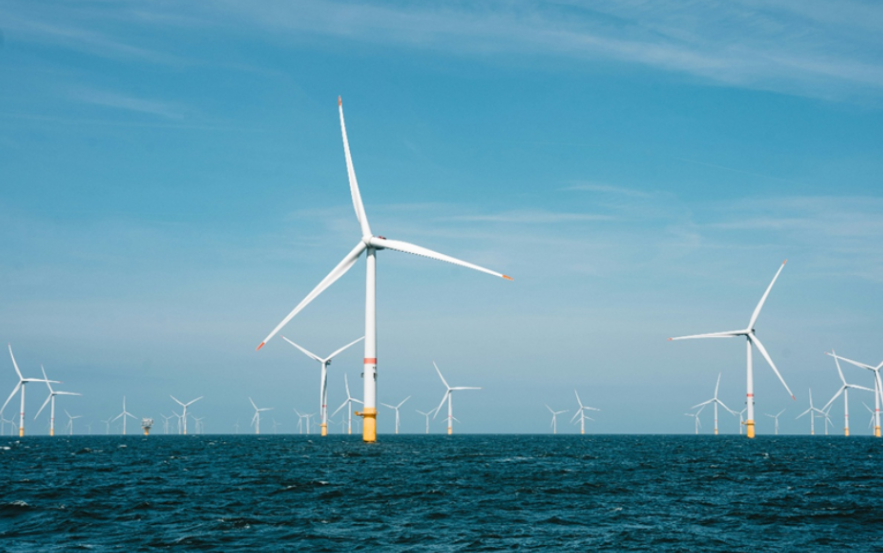Offshore Wind Power, the path for energy independence for Europe?
25 July 2025 /
Luca Rifelj 7 min

With multiple conflicts arising across the globe, such as those in Ukraine and the Middle East, the European Union (EU) has recognised the urgent need for energy independence. One promising solution lies in offshore wind farms, which benefit from favourable geographical localisation and growing financial support. However, several barriers stand in the way. These include an inadequate legal framework, intense international competition, and a growing dependence on critical raw materials. Together, these challenges complicate the EU’s efforts to secure a stable, autonomous energy future in an increasingly uncertain geopolitical landscape.
As Europe races toward climate neutrality and energy dependency, investments in the green transition have been steadily growing over the past decades. One renewable source, in particular, has captured the EU’s attention: offshore wind. Indeed, wind power and especially Offshore Wind Farms (OWFs) have a huge potential to become the European Union’s next major energy source, offering a cleaner alternative to fossil fuels in the green transition. OWFs consist of groups of wind turbines located at sea, where wind speeds are higher and more consistent than on land. This makes OWFs significantly more efficient, capable of reaching up to 90% of their full operational capacity annually. Moreover, they produce zero direct emissions or pollution, aligning with the EU’s climate objectives and net-zero commitments.
Recognising their potential, the EU has made OWFs its priority concerning its energy strategy. In its landmark 2020 Offshore Renewable Energy Strategy, the European Commission (EC) outlined an ambitious target: to expand offshore wind capacity from 20 GW today to 300 GW by 2050. Supporting this are new initiatives such as the 2023 Wind Power Package, which focuses on faster permitting, stronger grids, improved auction systems, and increased investment in innovation and workforce development. This is not a surprise, as geographically, Europe has a unique advantage: it is surrounded by five major sea basins. Among them, the North Sea stands out as a strategic hub due to its shallow waters, strong wind patterns, and proximity to industrial centres. With coordinated regional cooperation like the North Seas Energy Cooperation (NSEC), the North Sea is set to lead the way in transforming Europe’s energy future.
One question remains: Do offshore wind farms have the potential to become the next powerhouse of the EU? While there is still room for improvement on the technical side, such as with recycling and reducing maintenance costs, three major structural challenges could undermine the long-term viability of offshore wind farm projects in the EU.
First, legal and regulatory barriers continue to hinder the development of cross-border offshore wind projects. Indeed, member states operate under different legal systems, and this fragmentation complicates joint planning and infrastructure development. While the EU has made progress in harmonising Maritime Spatial Planning (MSP), critics argue that current frameworks lack the efficiency and legal force needed to support complex transboundary projects. Highlighting major incompatibilities of national planning laws, these critics emphasise the need for a harmonised legal framework, particularly for hybrid offshore wind projects, connecting wind farms to multiple national grids, bringing clear benefits for cross-border electricity trade and system integration. Yet, they remain constrained by outdated regulations, such as the current EU Electricity Market Regulation, which was not designed to accommodate hybrid assets.
To address this, offshore bidding zones (OBZs) have been proposed. These zones allow electricity to be traded across borders without considering transmission constraints, offering a flexible alternative to national boundaries. However, their implementation remains theoretical, and the effectiveness of the EU’s reviews on the topic is still uncertain. These zones face practical obstacles: misalignment with national support schemes, coordination difficulties with the UK post-Brexit, and political sensitivities around redrawing onshore zones. Despite aligning with EU law and offering theoretical advantages, OBZs require significant legal and economic reform. Stakeholders remain cautious, and while the EU recognises these barriers, solutions are progressing slowly. Achieving a workable legal framework will demand stronger political will, legal innovation, and deeper cross-border cooperation.
Second, the global race for offshore renewable energy presents opportunities and mounting challenges for the European Union. The EU remains a competitive player in offshore wind, particularly through strong export capacity. Between 2009 and 2018, it maintained a positive trade balance, with EU firms accounting for 47% of global exports in 2018. Notably, eight of the ten leading global exporters in the sector are EU-based. As new technologies emerge, like floating wind and ocean energy, they offer promising new markets for European companies. However, global dynamics are shifting. Offshore wind capacity in Asia is expected to reach 95 GW by 2030, with China leading in investment and production. The entry of Chinese-made turbines into the European market poses a significant threat, both economically and geopolitically. A parallel is seen in the solar sector: by 2023, over 90% of solar panels used in Europe were imported from China, with Chinese panels undercutting domestic ones by up to 40%. This has left EU manufacturers struggling to survive.
Though Europe’s wind industry has so far resisted this trend, Chinese turbine makers hold less than 1% of market share, and cracks are forming. As reported by Euractiv in 2024, German firm Luxcara ordered nearly 300 MW of turbines from China’s Mingyang, triggering a political backlash and investigations. The European Parliament (EP) responded through the Net-Zero Industry Act, which limits procurement from non-WTO GPA countries. In April 2024, the European Commission also launched a Foreign Subsidies Regulation inquiry into Chinese wind suppliers offering underpriced turbines and extended payment terms, which EU companies cannot match under OECD rules. Despite these actions, EU responses remain fragmented. Without a coordinated industrial strategy to address unfair competition, Europe’s leadership in offshore wind risks erosion. A unified approach is urgently needed to secure the EU’s energy sovereignty.
Lastly, the growing reliance on rare earth elements remains a growing concern for Europe’s wind energy, as at least seventeen critical metals are essential for technologies like wind turbines. The European Commission reports that 98% of the EU’s rare earth magnet supply comes from China, exposing the wind sector to significant geopolitical and supply chain vulnerabilities. Every three years, DG GROW, supported by JRC data, assesses the risk and economic importance of critical raw materials. Recent findings show high import dependencies: over 90% of magnesium and iridium come from China and South Africa, and 79% of lithium from Chile. This reliance spans beyond rare earths. Steel, a fundamental material for turbine construction, is also vulnerable. According to WindEurope, China and Indonesia dominate EU steel imports, posing risks to both renewable infrastructure and the green steel transition that wind energy could enable.
To address these issues, the Critical Raw Materials Act (CRM Act) under the EU’s Green Deal Industrial Plan aims to diversify supply, enhance recycling, and strengthen trade partnerships. However, its impact remains uncertain amid growing global competition and export restrictions. Critics argue the CRM Act lacks robust enforcement, particularly regarding the EU’s social and environmental standards in trade agreements. Without binding sustainability clauses, such as those pursued in the US-EU minerals agreement, the EU risks undermining its credibility and weakening public trust in new extraction projects. For OWFs, the CRM Act falls short. It gives limited attention to the wind sector’s specific needs, failing to adequately address rare earth supply risks. By prioritising general supply chain goals over targeted strategies, the Act may miss a crucial opportunity to secure long-term resilience in Europe’s wind energy sector.
As an endnote, OWFs offer strong potential for advancing the EU’s energy independence, thanks to high productivity linked to favourable locations and environmental conditions. Recognising this, the EU is providing funding and legislative assistance. However, cross-border projects like hybrid OWFs expose shortcomings in the current legal framework. Stakeholders argue that national and EU regulations are often misaligned, and regional price disparities further complicate development. Proposed solutions, such as the promising OBZs, are still untested. OWFs also face two broader challenges: rising competition from China, which threatens the EU’s market leadership, and dependency on third countries for critical raw materials.
Therefore, while OWFs have the potential to help the EU achieve green energy independence, significant challenges remain. A favourable legal framework is essential to remove barriers to OWF projects, and the EU must protect its market and industries from external competition. Securing key materials through re-industrialisation and effective trade agreements is also crucial. OWFs could become Europe’s next major energy source, but a few more years will be needed to address these challenges.
Luca Rifelj is a Master’s Degree student at the Institute of European Studies.
